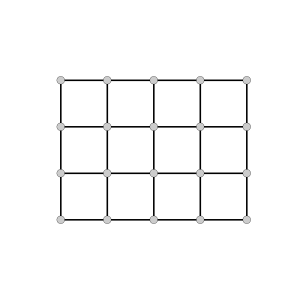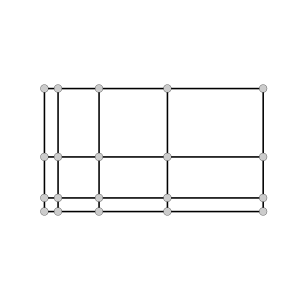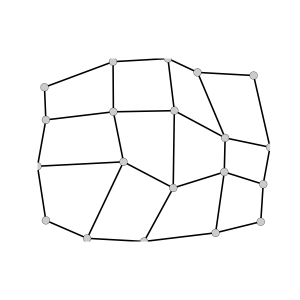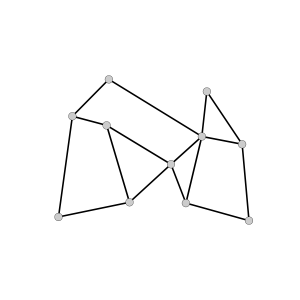BMI: Difference between revisions
From CSDMS
| Line 1: | Line 1: | ||
= '''CSDMS Basic Modeling Interface (version 1.0)''' = | = '''CSDMS Basic Modeling Interface (version 1.0)''' = | ||
: | : | ||
| Line 7: | Line 8: | ||
* Also by design, the BMI functions are '''''noninvasive'''''. A BMI-compliant model is not required to use CSDMS data structures and does not make any calls to CSDMS components or tools. BMI therefore introduces no dependencies into a model and the model can still be used in a "stand-alone" manner. | * Also by design, the BMI functions are '''''noninvasive'''''. A BMI-compliant model is not required to use CSDMS data structures and does not make any calls to CSDMS components or tools. BMI therefore introduces no dependencies into a model and the model can still be used in a "stand-alone" manner. | ||
: | : | ||
* Any model that provides the BMI functions can be easily be converted to a CSDMS plug-and-play component with a CSDMS '''''Component Model Interface''''' or '''CMI'''. The BMI functions are called by the CMI, by the framework and by service components. | * Any model that provides the BMI functions can be easily be converted to a CSDMS plug-and-play component with a CSDMS '''''Component Model Interface''''' or '''CMI'''. The BMI functions are called by the CMI, by the framework and by service components. It is not necessary for a developer to learn anything about the CMI unless they're just curious. | ||
: | : | ||
* Once a BMI-compliant model has been wrapped with the CMI interface to become a CSDMS component, it automatically gains many new capabilities. This includes the ability to be coupled to other models even if their (1) programming language, (2) variable names, (3) variable units, (4) time-stepping scheme or (5) computational grid is different. It also gains (1) the ability to write output variables to standardized NetCDF files, (2) a "tabbed-dialog" graphical user interface (GUI) (this requires a corresponding XML file) (3) a standardized HTML help page and (4) the ability to run within the CSDMS Modeling Tool (CMT). | * Once a BMI-compliant model has been wrapped with the CMI interface to become a CSDMS component, it automatically gains many new capabilities. This includes the ability to be coupled to other models even if their (1) programming language, (2) variable names, (3) variable units, (4) time-stepping scheme or (5) computational grid is different. It also gains (1) the ability to write output variables to standardized NetCDF files, (2) a "tabbed-dialog" graphical user interface (GUI) (this requires a corresponding XML file) (3) a standardized HTML help page and (4) the ability to run within the CSDMS Modeling Tool (CMT). | ||
Revision as of 17:37, 5 September 2012
CSDMS Basic Modeling Interface (version 1.0)
- In order to simplify conversion of an existing model to a reusable, plug-and-play model component, CSDMS has developed a simple interface called the Basic Model Interface or BMI. Recall that in this context an interface is a named set of functions with prescribed function names, argument types and return types.
- By design, the BMI functions are straightforward to implement in any of the languages supported by CSDMS, which include C, C++, Fortran (all years), Java and Python. Even though some of these languages are object-oriented and support user-defined types, the BMI functions use only simple (universal) data types.
- Also by design, the BMI functions are noninvasive. A BMI-compliant model is not required to use CSDMS data structures and does not make any calls to CSDMS components or tools. BMI therefore introduces no dependencies into a model and the model can still be used in a "stand-alone" manner.
- Any model that provides the BMI functions can be easily be converted to a CSDMS plug-and-play component with a CSDMS Component Model Interface or CMI. The BMI functions are called by the CMI, by the framework and by service components. It is not necessary for a developer to learn anything about the CMI unless they're just curious.
- Once a BMI-compliant model has been wrapped with the CMI interface to become a CSDMS component, it automatically gains many new capabilities. This includes the ability to be coupled to other models even if their (1) programming language, (2) variable names, (3) variable units, (4) time-stepping scheme or (5) computational grid is different. It also gains (1) the ability to write output variables to standardized NetCDF files, (2) a "tabbed-dialog" graphical user interface (GUI) (this requires a corresponding XML file) (3) a standardized HTML help page and (4) the ability to run within the CSDMS Modeling Tool (CMT).
- The CMI wrapping does not have a significant impact on performance. This is due to the use of Babel for language interoperability and the fact that CSDMS components pass values by reference instead of by copy whenever possible.
Fine-grained Control Functions
void initialize (in string config_file)
void update (in double dt) // Advance model variables by time interval, dt (dt=-1 means use model time step)
void finalize ()
void run_model (in string config_file) // Do a complete model run. Not needed for CMI.- These BMI functions are critical to plug-and-play modeling because they allow a calling component to bypass a model's own time loop. They also provide the caller with fine-grained control over the model, similar to a TV remote control.
Model Information Functions
array<string> get_input_var_names()
array<string> get_output_var_names()
string get_attribute( in string att_name ) // (for model_name, mesh_type, time_step_type, etc.)- These BMI functions are called by the CSDMS framework in order to determine what input variables each model component needs and what output variables it can provide to other components.
- Note that "long variable name" and "long_var_name" refer to standardized variable names from the CSDMS Standard Names.
- The get_input_var_names() function returns a string array of the model's input variable names as "long variable names". Similarly, the get_output_var_names() function returns a string array of the models output variable names.
- The get_attribute() function is passed an attribute name from the following list:
model_name author_name mesh_type time_step_type
- and returns a corresponding string. For the "mesh_type" attribute, the allowed return values are:
uniform, rectilinear, s_mesh and u_mesh
- as described below. For the "time_step_type" attribute, the allowed return values are:
fixed, adaptive, local
Variable Information Functions
string get_var_type( in string long_var_name ) // ( returns type_string, e.g. ‘double’)
string get_var_units( in string long_var_name ) // ( returns unit_string, e.g. ‘meters’ )
int get_var_rank( in string long_var_name ) // ( returns array rank or 0 for scalar)
string get_var_name( in string long_var_name ) // ( returns model’s internal, short name )
double get_time_step() // (returns the model’s current timestep; adaptive or fixed.)
string get_time_units() // (returns unit string for model time, e.g. ‘seconds’, ‘years’)
double get_start_time()
double get_current_time()
double get_end_time()- These BMI functions are called by the CSDMS framework to obtain information about a particular input or output variable. Based on this information, the framework can apply type or unit conversion when necessary.
- Note that "long variable name" and "long_var_name" refer to standardized variable names from the CSDMS Standard Names.
GET_VAR_TYPE: Return data type of a variable as a string. Some possible values are given in the following table.
| BMI datatype | C datatype |
|---|---|
| BMI_CHAR | char |
| BMI_UNSIGNED_CHAR | unsigned char |
| BMI_INT | signed int |
| BMI_LONG | signed long int |
| BMI_UNSIGNED | unsigned int |
| BMI_UNSIGNED_LONG | unsigned long int |
| BMI_FLOAT | float |
| BMI_DOUBLE | double |
Variable Getter and Setter Functions
double get_0d_double( in string long_var_name )
array<double> get_1d_double( in string long_var_name )
array<double,2> get_2d_double( in string long_var_name )
array<double> get_2d_double_at_indices( in string long_var_name, array<int> indices )
void set_0d_double( in string long_var_name, in double scalar )
void set_1d_double( in string long_var_name, in array<double> array)
void set_2d_double( in string long_var_name, in array<double,2> array)
void set_2d_double_at_indices( in string long_var_name, in array<int> indices, in array<double,2> array)
Grid Information Functions
- The BMI function call get_attribute( "mesh_type" ) should return one of the following strings:
uniform (for uniform rectilinear) rectilinear (for rectilinear) s_mesh (for structured mesh) u_mesh (for unstructured mesh)
- Each of these strings corresponds to a particular type of model grid or mesh. In order to provide a complete and standardized description of a model's grid, there is a different set of BMI functions that are required for each model "mesh_type" as described in this section.
- Note that an orthogonal curvilinear coordinate system is a special case of a "structured mesh".
- Note that "uniform rectilinear", "rectilinear" and "structured mesh" all have the topology of a two-dimensional array.
Uniform Rectilinear
array<double, 1> get_grid_spacing (in string long_var_name)
array<double, 1> get_grid_lower_left_corner (in string long_var_name)
array<int, 1> get_grid_shape (in string long_var_name)Rectilinear
array<double, 1> get_grid_x (in string long_var_name)
array<double, 1> get_grid_y (in string long_var_name)
array<double, 1> get_grid_z (in string long_var_name)
array<int, 1> get_grid_shape (in string long_var_name)Structured Mesh
array<double, 1> get_grid_x (in string long_var_name)
array<double, 1> get_grid_y (in string long_var_name)
array<int, 1> get_grid_shape (in string long_var_name)Unstructured Mesh
array<double, 1> get_grid_x (in string long_var_name)
array<double, 1> get_grid_y (in string long_var_name)
array<int, 1> get_grid_connectivity (in string long_var_name)
array<int, 1> get_grid_offset (in string long_var_name)



